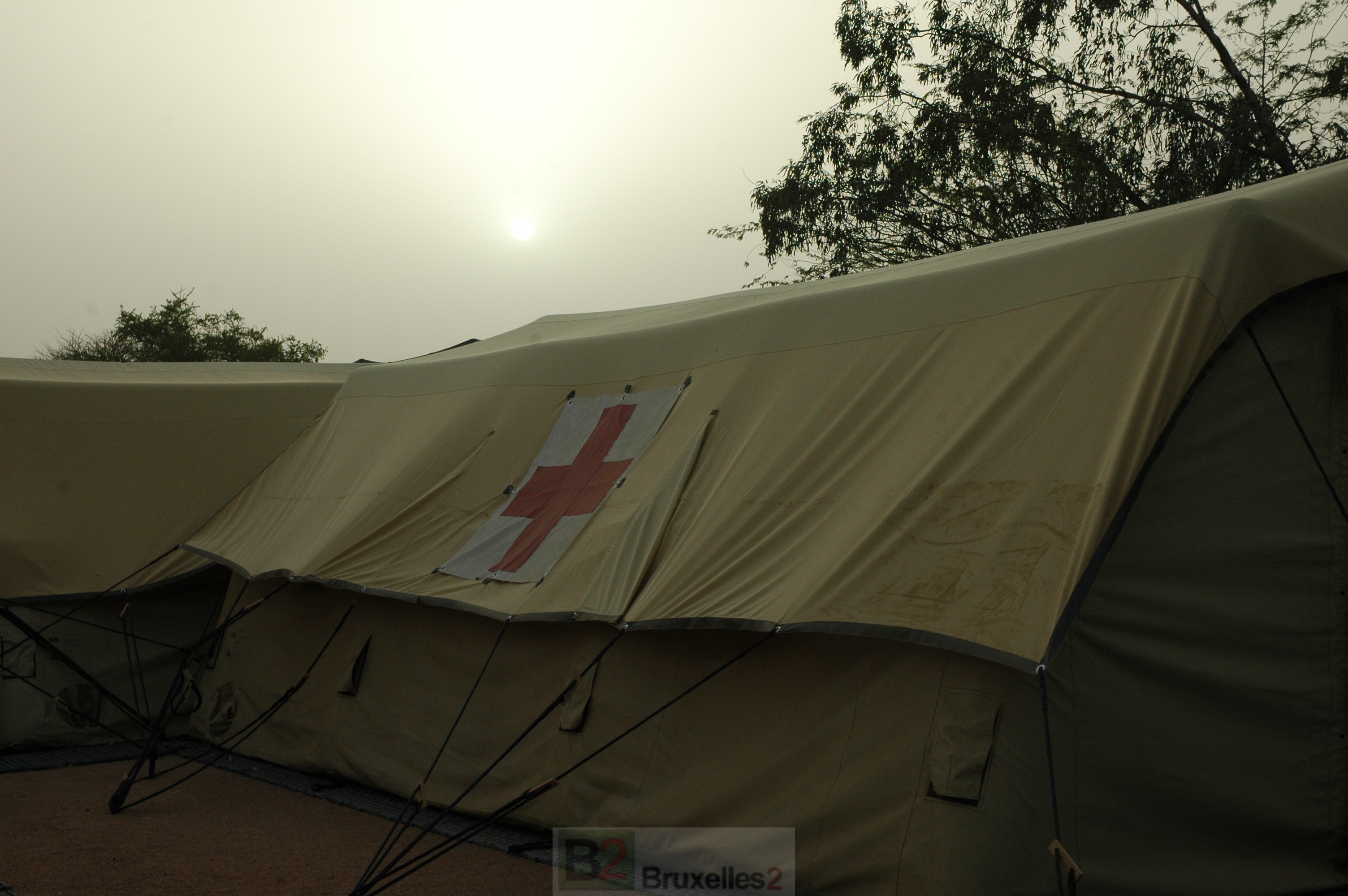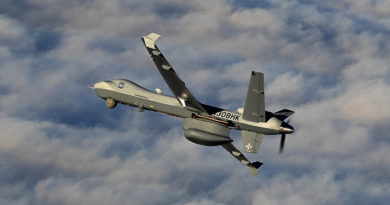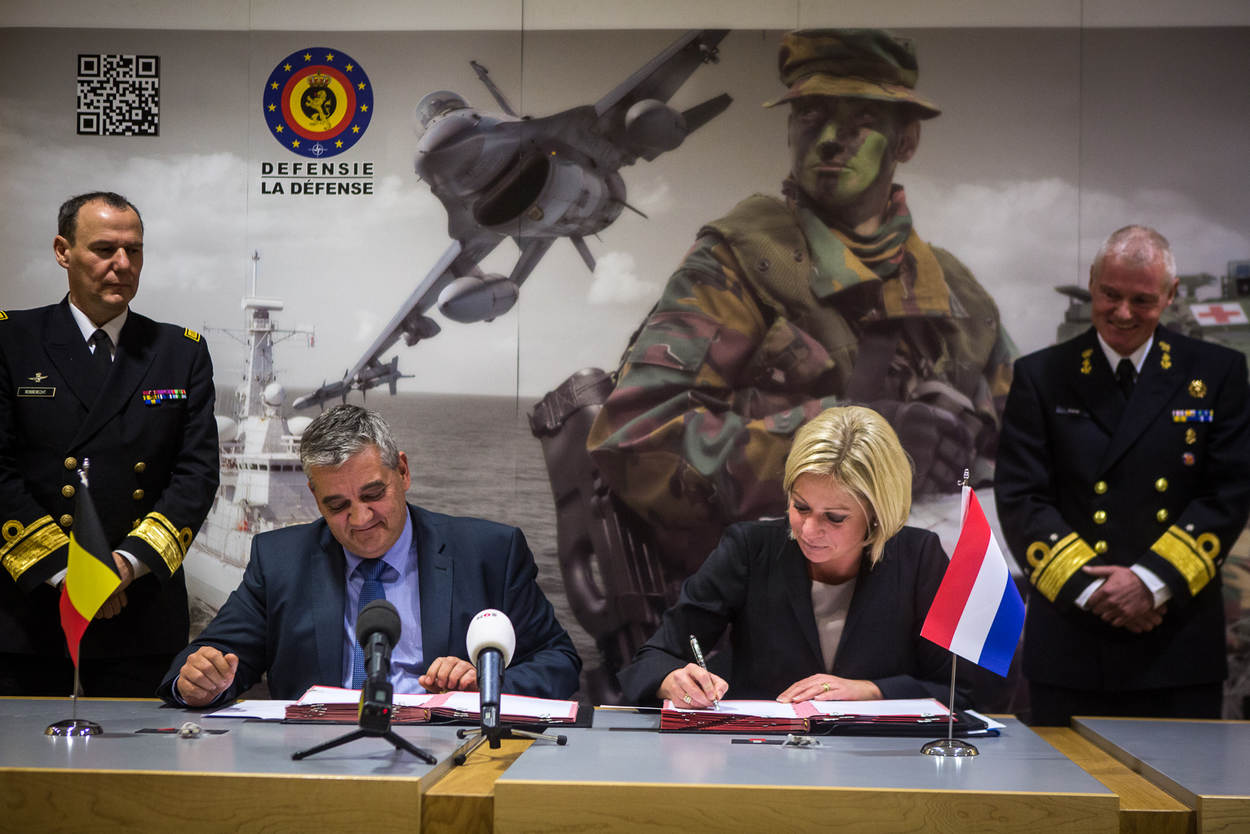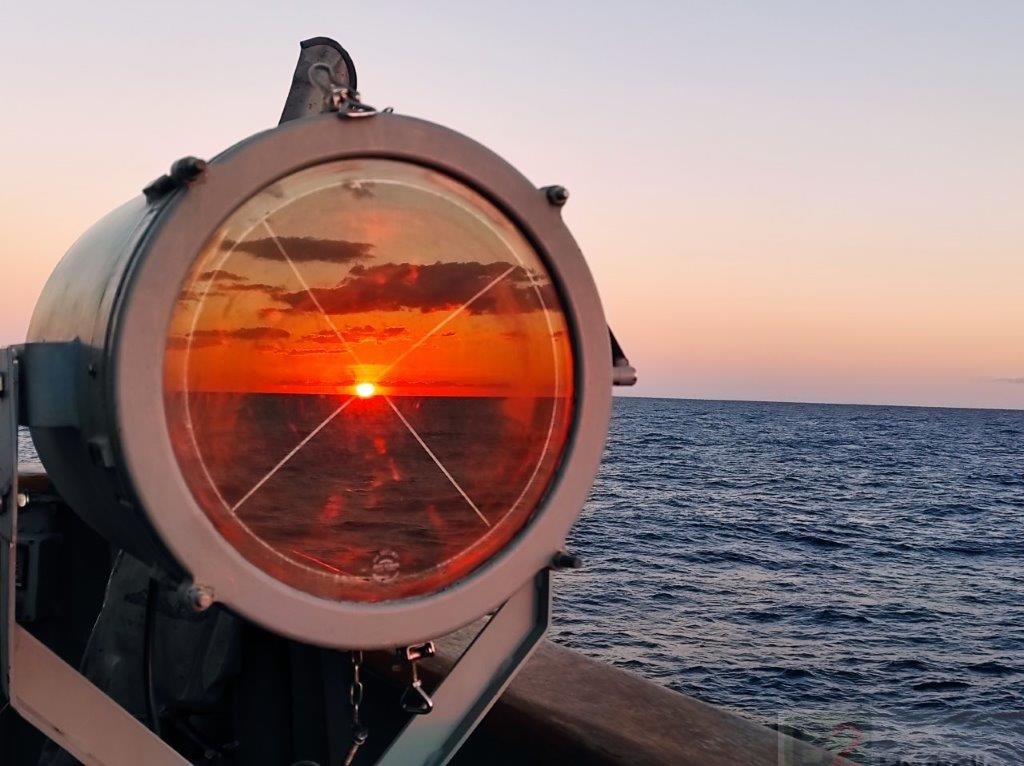PESCO will include 17 projects. The final list. Details project by project (V5)
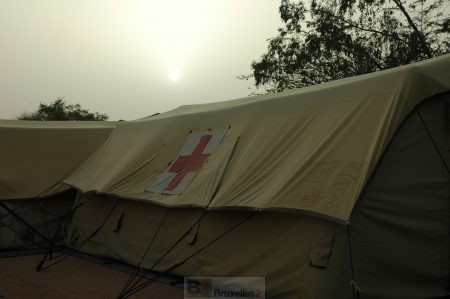
(B2 - Exclusive) The final list of Permanent Structured Cooperation (PESCO or CSP) projects to be announced on Monday (December 11) should include, according to our reliable information, seventeen projects.
This list will be the subject of a political declaration adopted at the EU Foreign Affairs Council, at the same time as the draft decision. From a formal point of view (read: PESCO: a few points (still) to be settled. The COREPER seized), the final list will be adopted later (in January or February).
Consolidation possible only on the logistics hub
Some changes are to be noted in the list previously given. It was not possible, in fact, to reduce the list to fifteen projects, as proposed. Of the nineteen projects selected in the last list (Read: Fifteen to nineteen projects selected for PESCO. The almost final list), three were easily grouped together: the three logistics hub projects – one led by Germany, the other by Cyprus, the third by France. The other projects (underwater drones) were too different to simply be grouped together.
Participants and observers
The list below includes six capacity projects (enablers), two on training, two on Cyber, three on sea and four on land (but none on air which is already the subject of several cooperations). As the rule defines, a project brings together at least two participating countries. And each country participates in at least one project. But they can also show their interest, without participating, by becoming "observers" of a project. This allows them to be associated with the project, to follow its developments and, if necessary, to join it more or less quickly. Countries usually participate in several projects.
Multiple participation preferred over duo participation
It can be noted that on average a project brings together three to six countries. One project brings together almost all the Member States (military mobility) while two others bring together a good majority of participants (logistics and training hub). Italy appears to be the champion of PESCO, leading 4 of the 17 projects and participating in 12 others (in almost all the projects therefore, except for rapid cyber response). Two projects currently have only two participating countries. This makes it possible to doubt their interest as well as their realization (armored vehicles, indirect fire support).
The list of selected projects
Facilities
1. Medical support. European Medical Command - European Medical Command (EMC)
Lead : Germany + 6 participants (Italy, Spain, Netherlands, Romania, Sweden, Slovakia) + 6 observers (Bulgaria, Czech Rep., France, Hungary, Lithuania, Luxembourg)
Objective: The European Medical Command (EMC) intends to provide the EU with a sustainable medical capability to support missions and operations in the field. The EMC will provide essential medical resources, including a multinational medical task force with a rapidly deployable capability for basic primary care. It will also provide facilities for evacuation, triage and resuscitation, treatment and accommodation of patients until they can be recovered, and emergency dental care. It will ensure efficient European management of so-called "scarce" European medical services (with a planning, management and coordination unit). It will also provide essential medical resources and help to harmonize national medical standards, legal requirements (civil) and principles of health service. The project should also advance interoperability and consistency of healthcare capabilities (with standardization of concepts, training and certification).
2. Radio. Radio frequency security software - European Secure Software defined Radio (GROWTH)
Lead : France + 6 participants (BE, DE, FI, IT, NL, PL) + 2 observers (EE, ES)
Objective: This project will provide a secure military communications system, improving voice and data communication between EU forces on a variety of platforms, including hand-held and vehicle-mounted devices. It aims to develop common technologies for European military radios. Adopting these technologies as a standard will ensure the interoperability of EU forces in joint operations, regardless of the radio platforms used.
3. Logistics hub and operations support. The network of logistics hubs in Europe - Network of Logistic Hubs in Europe - brings together three previously defined projects: the logistics hub proposed by Germany (European Logistics Hub ou Log Hub), the network of logistics structures on the outskirts of the Union - Logistic structures network at the periphery of the Union or LSN proposed by Cyprus and the logistic support to operations (operations support) proposed by France.
Lead : Germany + 12 participants (BE, BG, CY, EL, ES, HR, HU, IT, NL, PT, SI, SK) + 4 observers (FI, FR, LT, LU)
Objective: By combining the logistics infrastructure and existing processes, the project aims to improve the logistics supply of missions and operations. It aims to establish cross-border solutions for more efficient and seamless military transport/logistics and to connect existing European initiatives under one logistics roof. It is built around five services: logistics planning, construction of a network of logistics centers (hubs) in Europe, optimization of material storage and travel (transport), as well as the establishment of common standards and procedures.
4. Military mobility. Simplification and standardization of cross-border military transport procedures - Simplifying and standardizing cross-border military transport procedures
Lead : Netherlands + 22 participants (AT, BE, BG, CY, CZ, DE, NL EE, EL, ES, FI, HR, HU, IT, LT, LU, LV, PL, PT, RO, SE, SI , SK) + 1 observer (FR)
Objective: This project aims to support the commitment of Member States to simplify and standardize cross-border military transport procedures. It thus aims to improve the speed of movement of military forces across Europe, as well as to guarantee the unhindered movement of military personnel and goods within EU borders. This means avoiding lengthy bureaucratic procedures to cross EU Member States, whether by rail, road, air or sea. The project is expected to help reduce legal barriers to cross-border travel, lingering bureaucratic requirements (such as passport checks at some border crossings), and infrastructure issues, such as roads and bridges that cannot accommodate large military vehicles.
7. Energy. Energy function in operation - Energy Operational Function (EOF)
Lead : France + 3 participants (BE, ES, IT) + 5 observers (CY, DE, IE, NL, PT)
Objective: Improve energy autonomy in operation. Based on feedback, this project has a dual objective: 1°) jointly develop new energy supply systems for camps deployed in the context of joint operations and for devices and equipment connected to the soldier 2° ) ensure that the issue of energy is taken into account from the design of combat systems to the implementation of support for operations, including within the framework of operational planning. NB: this is a vital question today, especially in places that are difficult to reach (such as in the Sahel) but also in other operations (such as Afghanistan). Energy consumption is becoming a vital concern for armies deployed in overseas operations (read this survey carried out by the CICDE in 2009)
14. Commandment. CSDP Mission/Operations Command and Control (C2) System - Strategic Command and Control (C2) System for CSDP Missions and Operations
Lead : Spain + 3 participants (DE, IT, PT) + 1 observer (LU)
Objective: to improve the command and control systems of EU missions and operations at the strategic level. Once implemented, the project will strengthen the military decision-making process, improve the planning and conduct of missions and the coordination of EU forces. The Strategic Command and Control (C2) system for CSDP missions will connect users by providing information systems and decision support tools that will help strategic commanders accomplish their missions. Information systems integration would include intelligence, surveillance, command and control, and logistics systems.
Training
5. Training. Center of Excellence for EU Training Missions (EUTM) - European Union Training Mission Competence Center (EUTMCC)
Lead : Germany + 12 participants (AT, BE, CY, ES, FR, IE, IT, LU, NL, PT, RO, SE) + 2 observers (CZ, SI)
Objective: to improve the availability, interoperability, specific skills and professionalism of personnel (trainers) for EU training missions in participating Member States. This center should also help to accelerate the provision of EUTM missions thanks to a better situational awareness of trained, educated and available personnel for current and future EU training missions. A database should thus be created for trainers and mentors.
6. Certification. Training Certification Center for European Armies - European Training Certification for European Armies
Lead : Italy + 2 participants (EL, PT) + 1 observer (ES)
Objective: The European Armed Forces Training Certification Center aims to promote the standardization of procedures between European armies and to enable personnel, up to division level, to practice all command and control functions (C2 ) at land, joint and inter-agency levels in Europe. The Center will also be in charge of the training environment. The Center will ensure that soldiers and civilian employees work together in a simulated training environment with scenarios such as “Humanitarian Assistance” and “Stabilization and Capacity Building Support” and contribute to consolidating, sharing and making know available to plan and conduct CSDP missions and operations.
Maritime
9. Underwater drones. Underwater mine detection and destruction drones - Maritime (Semi-)Autonomous Systems for Mine Countermeasures (MASMCM)
Lead : Belgium + 6 participants (EL, IE, IT, NL, PT, RO) + 3 observers (EE, ES, FR)
Objective: Joint testing of semi-autonomous military submarine systems.
10. Port surveillance. Autonomous port protection and monitoring system - Harbor & Maritime Surveillance and Protection (HARMSPRO)
Lead : Italy + 3 participants (EL, IE, PT) + 2 observers (BE, NL)
Objective: Development of a system to bring together existing technologies for the protection of critical infrastructures in port and maritime areas.
11. Maritime Monitoring. Maritime Surveillance System Update - Upgrade of the Maritime Surveillance System (MSS)
Lead : Greece + 6 participants (BG, CY, ES, HR, IE, IT) + 1 observer (PT)
Objective: to improve maritime surveillance, situational awareness and the potential effectiveness of EU intervention, using existing infrastructure, deploying assets and developing related capabilities in the future. The project will integrate land-based surveillance systems, maritime and aerial platforms to disseminate real-time information to Member States, to provide rapid and effective response in international waters.
Cyber
12. Cyber. Platform for sharing information on the response to cyber attacks and threats - Cyber Threats and Incident Response Information Sharing Platform
Lead : Greece + 7 participants (AT, CY, ES, HU, IE, IT, PT) + 6 observers (BE, DE, EE, FI, LT, SI)
Objective: This project aims to help mitigate these risks by focusing on the sharing of cyber threat intelligence through a platform of networked Member States, with the aim of enhancing the cyber defense capabilities of countries, from firewalls to more active measures.
13. Cyber. Rapid reaction teams to cyber attacks and mutual assistance in cybersecurity - Assistance in Cyber security and Cyber Rapid Response Teams (CRRT)
Lead : Lithuania + 4 participants (ES, FI, HR, NL) + 5 observers (BE, DE, EE, EL, SI)
Objective: to integrate the expertise of Member States in the field of cyber defence. These Rapid Response Teams (CRRTs) will enable Member States to assist each other to ensure a higher level of cyber resilience and collectively respond to cyber incidents. Cyber RRTs could be used to support other Member States and EU institutions, CSDP operations and missions as well as partner countries. CRRTs will be equipped with deployable, unified Cyber Toolkits designed to detect, recognize and mitigate cyber threats. Response teams would be able to provide assistance with training, diagnostic and assignment forensic and operational assistance.
Land
8. emergency rescue. Disaster Deployable Military Support - Deployable Military Disaster Relief Package (DMDRP)
Lead : Italy + 6 participants (AT, EL, ES, HR, IE, PT) + 1 observers (BG)
Objective: construction of a mobile and deployable HQ for disaster relief.
15. armored. Armored Infantry Vehicles (AIFV) Armored Infantry Fighting Vehicle), amphibious (AAV Amphibious Assault Vehicle) and lightweight (LAV Light Armored Vehicle)
Lead : Italy + 1 participant (EL) + 5 observers (CZ, ES, HU, PT, SK)
Objective: to ensure interoperability between European armies by developing and building a prototype armored infantry fighting vehicle / amphibious assault vehicle / light armored vehicle. The vehicles would be based on a common platform and would be capable of rapid deployment for reconnaissance, combat support, logistics support, command and control, and medical support tasks.
16. Artillery. Indirect fire support - Indirect Fire Support (EuroArtillery)
Lead : Slovakia + 1 participant (IT) + 6 observers (BG, CZ, ES, HU, PT, SI)
Objective: to develop a precision mobile artillery platform that can contribute to the EU's combat capability requirements in the context of military operations. This platform should include the employment of land battle decisive munitions, non-lethal munitions and a common fire control system to improve coordination and interoperability in multinational operations. The ambition is thus to acquire a new capability/platform of a key component of the mission for land forces in the short and medium term.
17. Military operations. Operational core for crisis response (EUFOR CROC) Crisis Response Operation Core
Lead : Germany + 4 participants (France, Spain, Italy, Cyprus) + 4 observers (Belgium, Portugal, Czech Rep., Slovenia).
Objective: Contribute decisively to the creation of a cohesive set of full-spectrum forces. EUFOR CROC intends to identify the skills and forces needed for crisis management, together with a common threat assessment and deployment planning, in order to shorten the reaction time in the event of a crisis. In phase 1, the project will start with an implementation study. " Tomorrow, if we launch an operation rather in the middle of the crisis spectrum of the EUFOR Chad 2008 type, it is important to be able to identify extremely quickly troops capable of intervening on the spot, therefore not to wait for the force generation conference, to identify in advance, the type of unit troops (combatants, support, strategic transport, etc.) needed and available », Explains a diplomatic expert of the file.
(Nicolas Gros-Verheyde, with FDG)
Download the memo on the 17 projects with details project by project
Read also (for a country-by-country analysis): PESCO. The champions, the active, the reluctant. Who participates in what?
Update Article published in a first version on 7.12 on B2 pro, updated and open for reading on 10.12, details on the projects on 11.12)

